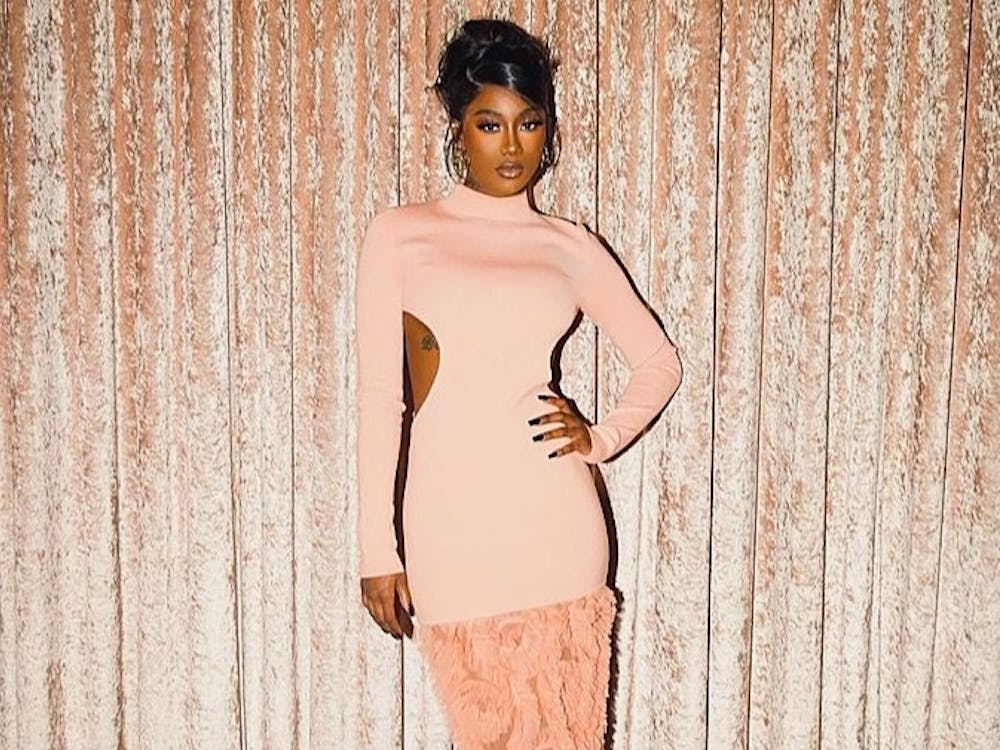The new Homewood Student Affairs (HSA) Branding Guidelines, announced on March 16, have outraged many student groups. The guidelines dictate that the names and logos of student organizations cannot imply the University’s endorsement. The policy stresses the importance of respecting the “Hopkins brand.”
A group can only use the Hopkins name to specify that it is located at the University, unless the word “student” is in its name. For example, JHU Karate Club would have to change its name to Karate Club at Hopkins or JHU Student Karate Club.
The guidelines also regulate the use of University iconography like the Johns Hopkins signature and the official Hopkins shield. While students are allowed to use official iconography in their logos, they must use pre-approved fonts and colors.
The University argues that misused fonts and iconography could lead to “unfavorable reactions.”
Many student groups feel that the University is restricting the use of the Hopkins name and believe that the guidelines are both inconvenient and unnecessary. Others believe that the new guidelines disrespect the identity and legacy of student organizations.
The University has stated that it will not rescind the policy.
Many student group leaders see the branding guidelines as a measure to separate them from the Hopkins brand. Junior Nicole Israel-Meyer, the president of the Johns Hopkins Outdoor Club (JHOC), criticized the administration for requiring groups to change their names.
“JHOC is pretty upset with the new naming policy,” she wrote in an email to The News-Letter. “We are proud to represent Johns Hopkins. To take away our chance to use the Johns Hopkins name in our title seems like the University is not as proud to have us as a club.”
According to the Collegiate Link student organization directory, there are currently 420 registered student groups on campus. At least 150 groups will need to change their name or logo to comply with new guidelines for the 2017-2018 school year.
Mike Scrivener, the web content manager for HSA, said that the University has not previously outlined branding guidelines specifically for student groups. However last May, HSA and the Office of Communications began leading a broad initiative across all divisions of the University to regulate and standardize the Hopkins brand.
Scrivener explained that the University implemented the new branding policy so that outside parties will not confuse a Hopkins student group with the administration.
He pointed out one incident in the past where the Johns Hopkins Investment Group, a student-run investing club, was unintentionally confused as part of the administration. Scrivener described how an outside party contacted the group thinking that they were part of the administration.
“That was certainly not good,” he said.
According to Scrivener, there has been confusion over student names and logos in the past, but no event directly contributed to the creation of the guidelines. Instead, the policy is meant to be a preemptive measure.
“At no point do I think students [have] intentionally misrepresented or been disrespectful to the brand,” he said. “I think it’s just been unintentional things like the JH Investment Group... I can’t give you any other examples off the top of my head of someone who was intentionally disrespecting the brand.”
Senior Maura Kanter, the president of the JHU Barnstormers, feels that the University is distancing itself from student groups.
“I thought, wow, they’re really cleaning their hands of the student groups in this way,” she said.
Sophomore Harsh Wadhwa, the vice president of programming for JHU Splash, a volunteering group, said that they plan to comply with the policy. However, he believes the branding guidelines make it more difficult for organizations to interact with outside parties.
“We believe that, moving forward, this policy will make it much trickier to demonstrate that we are Johns Hopkins students trying to forge a partnership with Baltimore rather than just some individuals hosting an event at Johns Hopkins,” he wrote in an email to The News-Letter.
Scrivener defended the policy saying that they do not intend to create distance between the University and its student groups.
“It’s unfortunate to hear that some students may have felt that we’re trying to distance ourselves from them,” he said. “That’s quite the opposite. We’re encouraging students to use those key elements of the Hopkins brand. We are really encouraging students if they want to align themselves with us... to do that. We’re just trying to provide them with those guidelines.”
Kirsten Fricke, Director of Student Leadership and Involvement (SLI), also argued that the branding guidelines will help make events like the Student Involvement Fair less confusing.
“One of the things we struggle with, and I think our students struggle with, is anytime they go to an involvement fair, and they try to find a group alphabetically, it’s very confusing,” she said. “They’re not sure if they go by JHU or Hopkins, Johns Hopkins, or the Johns Hopkins.”
At the last two Student Involvement Fairs, group tables were not organized alphabetically.
Fricke also emphasized that the changes will not severely impact many groups.
“A lot of the organizations that have Hopkins or JHU in front of [their names], they usually drop that off already and refer to themselves by whatever the next part is,” she said. “So I’m optimistic that it won’t be that hard of a transition for a lot of those groups.”
According to Fricke and Scrivener, the goal of the branding guidelines is not to force student groups to change their names and logos completely.
“A lot of the student organizations, again, [required] either a minor change or a little shift in the language and they were fine,” Fricke said.
She clarified that a group, such as the HOP, can keep its acronym so long as it also has an official name that specifies it is a student organization.
“The HOP is a great example,” she said. “They can still be the HOP. They’ve been the HOP for decades. However, when they talk about themselves as an organization, they need to clarify that they’re a student organization.”
Senior Maura Kanter, the president of the JHU Barnstormers, was concerned about changing the group’s name, given its historic significance. The organization originally formed in 1919 under the name of JHU Dramatics Club and became the JHU Barnstormers in 1924.
“The fact that we have to change our name, which has historic meaning and a wonderful founding — we would now just be The Barnstormers with no context,” she said. “We always thought the school was our ally, and now it seems like we’re having to distance ourselves from them.”
Senior Rebecca Black, the co-president of the JHU Modern Dance Company, expressed similar concerns with the guidelines.
“We want to work as closely with the administration as we can,” she said. “It’s tough when we have such a history, being here for 36 years. Do we have to just completely rebrand now? That seems unfair when we’ve been part of the Hopkins culture for so long. Or the culture at Hopkins, should I say.”
In response, Fricke said that the University does in fact endorse student groups.
“It’s one of those balancing acts where we as an institution, we are supporting and endorsing the student organizations, but we have to be careful as an institution that outside people don’t see Hopkins as an independent entity endorsing one type of organization over another,” she said.
Scrivener also admitted that he could understand why students were upset by the language used in the branding guidelines.
“Unfortunately that language of ‘respecting the brand’ is fairly typical for these sorts of documents,” he said. “Probably in hindsight we should have used some language that was a little bit softer in addressing that.”
The University compares its policies and standards to an official list of peer institutions known as the Consortium on Financing Higher Education (COFHE). This list includes schools like Harvard University, the University of Pennsylvania, Dartmouth College and Columbia University. Branding guidelines are a growing trend among these peer institutions, and most provide some regulations for student group names and logos.
For example, UPenn requires all registered groups to publicly identify themselves as student organizations. At the California Institute of Technology, groups are permitted to use the Caltech name as long as the use is related to the mission of the university.
However, other schools do not regulate use of the university’s name. Dartmouth allows all recognized student groups the right to use its name in activities and publications. Dartmouth also considers student groups recognized representatives of the college at “all functions in which the organization participates.”
Unlike Dartmouth, the branding guidelines at Hopkins regulate how student groups promote their organizations through items like t-shirts. The HSA branding policy states that if student groups choose to use University iconography or the Hopkins name on t-shirts, they must first submit their designs for approval from SLI.
T-shirt approval has been inconsistent. Wadhwa explained that JHU Splash was planning on ordering t-shirts at the beginning of 2017 and was required to adhere to the design.
“We were told that [the t-shirts] could not say JHU Splash, and were informed about the additional rules regarding logos,” he wrote in an email to The News-Letter. “It was a frustrating and complicated process to work around, but that may have been because it was just starting to be implemented.”
However, Black stated that SLI approved t-shirts for JHU Modern Dance Company on March 17, even though the design violates the new branding guidelines. The design includes the group’s name, “JHU Modern Dance Company,” which uses the University’s name in a non-locational sense. Black stated that after speaking with Fricke, t-shirts were approved since the organization had submitted their designs for approval before March 16.
“We’re actually able to keep our old shirts because they were ordered before the announcement,” she wrote in an email to The News-Letter.
Many student groups are confused about how to proceed. If organizations refuse to follow the new policy, they may not be approved for re-registration. Some students, like senior Jordan Britton, have reached out to the administration to better understand the rationale behind the policy. He sees the new guidelines as an example of the corporatization of the University.
“It seems like it’s part of this move that Hopkins is taking to [foster] this corporate culture they’re incorporating into the administration,” he said. “Who worries about brands? Corporations.”
Britton searched the Collegiate Link directory to find the emails of student groups who may be affected by the new policy. He emailed 94 groups to explain the effects of the policy and share his own opinions with student leaders.
“I invited them all to unify and form a cohesive resistance to this new policy,” he said.
Sophomore Michael Sun, president of the Johns Hopkins University Cubing Association, saw Britton’s email and decided to draft a letter asking the administration to justify the guidelines and reconsider implementing them. The letter was signed by 31 student groups and sent on Tuesday, March 28.
“To say that we are just a student organization at Johns Hopkins would be to deprive us of our originality and label us as one insignificant group of rascals who happen to be students and just so happen to meet on Johns Hopkins University property,” he said.
Fricke responded to all 31 co-signatories of the letter on March 29 and emphasized that she is willing to work with all student groups in changing their names and logos. Sun said the administration failed to answer the letter’s questions.
“[Fricke] didn’t really address our concerns about why the new policy was implemented. She avoided answering that entirely,” Sun said.
However, Sun noted that he does not blame SLI for the branding guidelines.
“We acknowledge that SLI is more like the middle people between the students and the Office of Communications,” he said. “We understand that they might not be able to do as much as they might like to... The fact that they avoided both of our questions indicates that the policy is out of their control or at least out of SLI’s control.”
Sun stated that he is unsure whether he will continue to protest the branding guidelines.
“It might be like the instance with covered grades where we students are upset with [the administration],” he said. “We would like change and for them to actually reconsider, but in the end our voices fall on deaf ears.”
The email sent on March 16 also encourages students to attend a branding workshop on April 1 where Student Leadership Consultants can answer questions about the new guidelines.
Fricke also emphasized that the administration had explained the new policy to several student groups such as the HOP and the Student Government Association (SGA) before the announcement.
Sophomore Class Senator AJ Tsang explained that the administration informed SGA about the new policy and told them to encourage students to accept it.
“We were told to tell [students] that the new branding guidelines are basically set in stone,” he said.
He also noted that using the University’s name in a student organization’s name or logo helps to validate a group’s identity.
“A lot of student groups really rely on having the ‘Hopkins’ in their name to lend them credence or ethos as Hopkins students,” he said. “It ensures to outside parties that these students are Hopkins students.”
He also pointed out that the SGA should represent students and not the administration.
“At the end of the day, the point of the SGA isn’t to be the lackey or the servant of the administration,” he said. “We’re the voices of the students, and if students come to us and make it clear to us that these branding guidelines are terrible, then we will have no choice but to tell SLI that we can’t go through.”























Please note All comments are eligible for publication in The News-Letter.